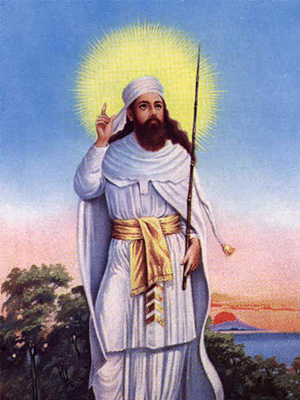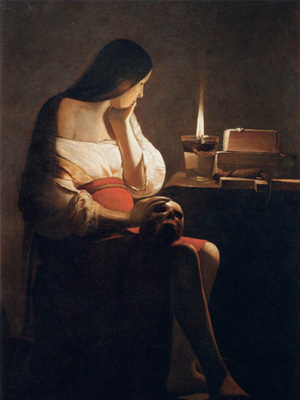Masonic Articles and Essays
Theurgy - Part II
The Illus..... Bro... Kris Wilson-Slack 33°
Date Published:
2/7/2024
In the second part of the series on the Theurgic roots of Freemasonry, we learn not only of the origins of the practice but of what benefits and powers were said to be granted to its most devoted students. By "working with God" do we fulfill the tenets of Masonry?
 I believe that theurgy is not commonly understood in the wider modern world. To define it in modern terms, we call it “divine magic.” Jeffrey Kupperman, author of Living Theurgy: A Course in Iamblichus' Philosophy, Theology and Theurgy., noted it's origin is “god-working.” While theurgic practices and practitioners had been in place for thousands of years previous, it wasn’t until the 4th C.C.E. writing of the Chaldean Oracles that we have written evidence of theurgy. “For the theourgoi do not fall under the fate-governed hand.” From this 2000-year-old fragment of writing, we understand that those who practiced theurgy were considered in charge of their own destinies.
I believe that theurgy is not commonly understood in the wider modern world. To define it in modern terms, we call it “divine magic.” Jeffrey Kupperman, author of Living Theurgy: A Course in Iamblichus' Philosophy, Theology and Theurgy., noted it's origin is “god-working.” While theurgic practices and practitioners had been in place for thousands of years previous, it wasn’t until the 4th C.C.E. writing of the Chaldean Oracles that we have written evidence of theurgy. “For the theourgoi do not fall under the fate-governed hand.” From this 2000-year-old fragment of writing, we understand that those who practiced theurgy were considered in charge of their own destinies.
Through societal and cultural shifts throughout thousands of years, the knowledge and use of the term “magic” has become personal, individual, and disassociated with religion and holiness. There are many reasons for this alteration. However, as members of a modern mystery school that developed from Neoplatonic philosophies, Freemasons must remember the original source of this power, as mentioned above: divine, omnipotent power was and is magic.
To achieve understanding with the gods, a process of spells, invocations, rituals, and usage of divine symbols was necessary to bring about divine communion. This is done today, still, in most major religions and in some of our secular off-shoots from religion. We have eggs at Easter, lights at Hannukah, and the Sufi dervish. Communion is symbolism in theurgic form, as is the use of the classical physical elements in any initiatory ritual.
The desired results of “perfecting humanity” come about because Freemasonry is an experiential process that “quickens the evolution” of the individual. This, in turn, develops the whole of humanity. The first aim of Esoteric Freemasonry is to develop unused and underdeveloped talents and capacities. Why is that the goal? To what end?
The neophyte is told that “…the facts of the invisible world were revealed to the pure, and thus within each religion men were found, who, knowing the secrets of this world, could explain and defend religion.” How does one become adept enough to be able to grasp the facts of the invisible world? We do this through a series of allegories and the contemplation of symbols found in our Initiation, and all other Masonic rituals. The process of Freemasonry is not to relate or instruct what symbols mean as it is adogmatic. However, there are guideposts, and landmarks, that tell the neophyte that this is Freemasonry. To gain the ability to work as an officer in ritual, the initiate must spend time after their initiation learning the rules, regulations, mores, customs, and hierarchy that Freemasonry outlines. Neophytes are required to study and to act on those studies with questions and contemplation, to cultivate their own cosmology.
 More than this, the neophyte is instructed to develop the ‘gifts’ with which God has endowed him, amongst many other improvements to his character. These are well-laid out in the First-Degree Traditional Charge, one which every Apprentice must listen to before taking other degrees. The foundation of these teachings is not to force someone to “follow the rules.” It is a structure laid out whereby the neophyte is guided to find their own path through the darkness, to have their own revelations, and to make “crooked things” straight. This is done through observation, silent contemplation, and asking questions. This method is the basis for our Masonic work and should be applied throughout our Masonic career. Perhaps this is why it is often said that all Masons, regardless of the degrees they pass through, are always in the “First Degree.”
More than this, the neophyte is instructed to develop the ‘gifts’ with which God has endowed him, amongst many other improvements to his character. These are well-laid out in the First-Degree Traditional Charge, one which every Apprentice must listen to before taking other degrees. The foundation of these teachings is not to force someone to “follow the rules.” It is a structure laid out whereby the neophyte is guided to find their own path through the darkness, to have their own revelations, and to make “crooked things” straight. This is done through observation, silent contemplation, and asking questions. This method is the basis for our Masonic work and should be applied throughout our Masonic career. Perhaps this is why it is often said that all Masons, regardless of the degrees they pass through, are always in the “First Degree.”
I want to be clear that Freemasonry can’t explain to the individual every pattern, every symbolic meaning, or every allegory contained within its rituals. Freemasonry provides opportunities for its adherents to exercise and grow the capabilities required to develop those “unused and underdeveloped talents.” While this specific objective of Esoteric Freemasonry is not exactly theurgy, it is required to be able to move into the next two theurgic aims as listed above.
It should be noted here that this is the reason, I believe, that philosophers were the first theurgists. To comprehend Divinity, we need to appreciate and revere
Nature, to read the symbols and patterns there which inform us of the Divine’s Will. Ancient philosophers studied all parts of the human experience and thus came to understand the divine nature of the entire universe to develop their cosmology. Only then could they seek to commune with Divinity, and further the knowledge of the human race.
In Part Three, we will delve into the second objective of Esoteric Freemasonry, that of fathoming the cycle of life and death.
More Masonic Articles
Explore articles and essays written by Freemasons about Freemasonry.
Read More
Membership
Interested in becoming a member of the worlds oldest Fraternal organization?
Read More